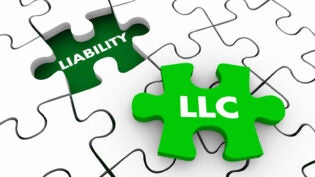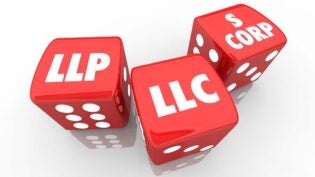
Minimum Viable Product (MVP), if we ask our trusted friend Techopedia, it is defined as “The version of a new product a team uses to collect the maximum amount of validated learning about customers with the least effort.”
The term first came about in the early 2000s thanks to SyncDev CEO Frank Robinson. It then gained viral traction after it was used by serial entrepreneur Steve Blank and author of The Lean Startup Eric Ries — a book that places MVP at the heart of its message. In his talk Building the Minimum Viable Product, Eric Ries describes a simple formula for finding your MVP, “Take what you think it is right now and cut it in half — and do that two more times.”
While MVP may seem a rather a flashy term for startups, it’s concept that can apply to any business — big or small — when you’re launching a new product or service. If you’re a startup or small business owner set to change the world with your ideas, it’s worth understanding the reasons and benefits for sticking with your MVP at the outset, before adding unnecessary bells and whistles.
What is MVP?
An MVP has just enough features to satisfy a company’s earliest adopters — and no more. The idea is to create the most basic version of a product on which to gather feedback, after which you can start to add more features and functionality. That’s the “minimum” part of the equation. The product must also be viable, in that your early adopters should still want to buy it. It needs to be simple, but sellable.
Say you just invented the cheeseburger. The cheeseburger as we know it contains lots of ingredients: burger bun, beef, cheese, onion, tomatoes, lettuce, pickles, dressing and seasoning.
How would that look as an MVP? It’s the absolute minimum that a cheeseburger needs to qualify as a cheeseburger: burger bun, beef, and cheese. You need the beef and cheese, but you don’t need the salad. It’s a nice addition, but not essential. Here you have just enough ingredients from which to build and improve your product, as feedback dictates.
Another example: If you are launching a line of running clothes and accessories, you’d begin with just the essentials to get you to the starting line.
Why Should You Keep it Simple?
Why bother with a “basic burger” or “bare minimum” when you can go straight for the real thing? The reason is that gathering initial insights from an MVP is much less expensive and risky for a new business. You could spend years honing and perfecting your product, only to find that it fails.
All that time and money wasted because you thought you knew what your market wanted, but neglected to ask them. As Tren Griffin outlines in his article A Dozen Lessons about Minimum Viable Products (quoting Jessica Livingston), “If you create something and no one uses it, you’re dead. Nothing else you do is going to matter if people don’t like your product”. If customers like the product even in its early stages, then chances are they will only like it more as you refine its design and capabilities.
Your MVP is not the same as your proof of concept (POC)– the two are often confused. Your POC is how you validate marketability, e.g. with a prototype, whereas MVP is creating a minimal form of your complete solution that you will sell — which is the next stage in the process.
It goes without saying that you should create your MVP as cheaply as possible. Use all of the tools and services you have at your disposal to streamline this process. It’s natural not to be 100% over-the-moon with your first product — if you are, then you’ve likely spent too long tweaking and perfecting it already.
In summary, an MVP allows you to:
- Test run a new product with minimal resources and investment.
- Reduce overall development time (less is wasted).
- Get your product into customers’ hands sooner.
What Happens When You Throw Caution to the Wind?
Roland Chan, founder of Find Bob Ltd., learned about MVP the hard way. He spent months locked away in his basement developing the perfect product with all the bells and whistles. Then…
“When I first deployed Find Bob, I imagined countless advisors clamoring to get on board, dreamt of calls from Swedish & Norwegian committees recognizing me for my social advances in this industry.
Of course, all those musings evaporated quickly enough when I didn’t attract any users, and the irony became quite apparent.
My wife poignantly pointed out, nobody really cared, but me.”
How can I Determine my MVP?
Chances are, you don’t sell burgers. But this principle applies across the board. If you’ve come up with a new idea for a product and you want to take it to the next stage, ask yourself:
- What is the core of this idea?
- What value will users gain?
- How can that value be captured using minimal time and resources?
Start small and work up. This is not only the best way to learn, but the best way to conserve your resources. But stay focused on the value of the product. Bells and whistles without value are no good to anyone (unless you’re a Morris dancer). They’re a bun full of salad. At this stage, you must be willing to be ruthless — if it’s not essential right now, cut it. You can always add it in again later.
In the article How to Define Your Minimum Viable Product, Rohit Sharma redefines the concept as “minimum buy-able product” and reminds readers that as with any new business idea, you also need to take into account its scalability, target audience, primary features, cost, and regional considerations.
What are the Advantages of MVP?
Starting a new business venture with an MVP introduces you to a much more flexible way of working. Of course, it’s not for everyone, but it certainly has its advantages, particularly for digital businesses. Ultimately, it comes down to usability.
User experience (UX) is generally agreed to be one of the most important factors online, whether it’s a simple website or a new digital software. Starting with an MVP allows you to test the waters and get your preliminary version out there. In doing so, you will gain invaluable feedback.
You may find that users tend towards certain features and not others. They may stumble across some usability issues. There may be features missing that you would never have thought of. This flexible “add as you go” approach enables you to build the service your customers actually want and need. What’s more, you didn’t waste time and money developing whole sections of the software or service that weren’t necessary.
Of course, when you have a product that really adds value to customers’ lives, their friends, family, and coworkers are going to hear about it. Never underestimate the power of word of mouth – even in the digital age.
Why Don’t you Prove it?
Happy to. Here are three success stories that illustrate how and why MVP works:
Unsplash
Photography website Unsplash came about as a response to overpriced and low-quality stock imagery. You may already know of Unsplash, but what you may not know is that it started out as a free Tumblr blog with a cheap theme and a small, slowly growing library of photos. It rapidly drummed up interest and as this interest grew, the company grew with it. By the time Unsplash launched its site, it already had an audience. Now, the website gets millions of downloads every month.
Dropbox
The founders of file-sync solution Dropbox started out their business venture with a 3-minute overview/how-to video to see if customers would be interested in the solution. With this simple, animated video, focused on what Dropbox could do for user experience, sign-ups shot up to 75,000 almost overnight even though the product had not yet been fully developed. This served as excellent validation that the service was worth pursuing. What’s more, it convinced their investors that this was a safe bet. By the time Dropbox was up and running, its customer base was ready and waiting.
Shopify
Shopify’s ecommerce website builder is a prime example of a service that provides entrepreneurs with a quick way to trial an MVP, without sacrificing quality. Its online store builder package gets new store owners up and running in less than a day, without any big-time investment. First-time users enjoy a free 14-day trial — so if it’s not the right solution, no funds have been lost. Shopify is an ideal MVP testing ground for ecommerce entrepreneurs that allows users to experiment with new ideas and make tweaks and fixes along the way — in essence, what MVP is all about.
Having an MVP doesn’t guarantee that your idea will be a success. But, what it does do is help to give an accurate reading of customer interest, before you invest thousands in a product that no one will want or use. What’s more, it will ensure that the final result is the best solution for customers, built on their feedback, for their needs.
 Author: Patrick Foster is a freelance writer and entrepreneur contributing to many digital publications that specialize in business, ecommerce and blogging. He enjoys nothing more than sharing his knowledge with others, especially on his website EcommerceTips.org.
Author: Patrick Foster is a freelance writer and entrepreneur contributing to many digital publications that specialize in business, ecommerce and blogging. He enjoys nothing more than sharing his knowledge with others, especially on his website EcommerceTips.org.












